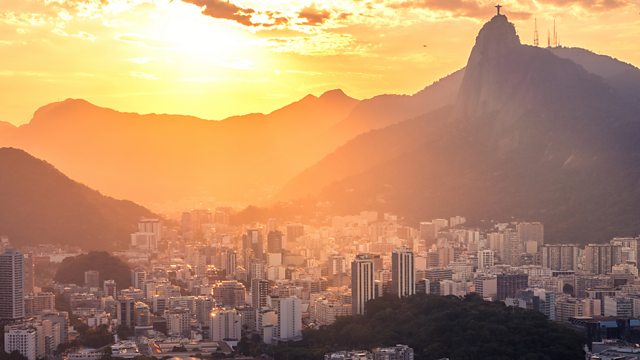Extreme heat death risk in Latin America
Study reveals risk of death as temperatures rise in Latin American cities. Also, global heating overshoots, biodiversity, pain relief implant, and a new view of Earth’s minerals
Audio for this episode was updated on 8th July.
A new analysis of deaths in cities across Latin America suggests rising global temperatures could lead to large numbers of deaths in the region and elsewhere in the world. Even a 1-degree rise in extreme heat can add 6% to the risk of dying. Lead researcher Josiah Kephart at Drexel University tells Roland Pease the lessons from Latin America should apply to cities across the global south.
Brazilian ecologist Andreas Meyer talks about the troubling prospects for the health of ecosystems, particularly in tropical regions, if the world does not cut its fossil fuel emissions hard and fast in the next few years.
In the USA, a team of engineers and neurosurgeons are developing a radical new approach for targeted pain relief – in the first instance, for patients recovering from surgery. It’s a flexible implant that wraps around a nerve and cools it to prevent it from transmitting pain signals. What’s more, says bioengineer John Rogers, the implant is made of a material designed to have dissolved safely into the body by the time its pain-killing work is done.
Geologist Bob Hazen has spent more than a decade producing a new classification system for the 5,700 minerals known to exist on the Earth. It improves on the pre-existing scheme by taking into account the myriad ways that many minerals have come into being. He tells Roland that this new way of categorising minerals lays bare a 4.5 billion-year history of remarkable chemical and biological creativity.
And, Hair is an important part of our identities – straight, frizzy, long, not there at all – and our efforts to keep it styled and clean have created an $80 billion hair care industry. Many products offer to improve the life of the stuff on our heads, but isn't it all just dead protein?
CrowdScience listener Toria wants to know what 'healthy' hair really means. To untangle the science behind hair, we zoom in to see how hair grows from the follicles in our scalp and explore how the hair growth process will change over our lifetimes.
Changes in our hair and disorders affecting the scalp can often have emotional impacts on our lives, as presenter Marnie Chesterton learns from a dermatologist who specialises in hair issues.
Having been on a journey with her own hair in recent years following chemotherapy, Marnie is ready for a new 'do and ventures to the hair salon to find out about the health of her own hair.
Meanwhile, another CrowdScience listener, Lucy, wonders why humans lost hair (or fur) on most of our bodies when most other mammals are covered in the stuff. A biological anthropologist who studies not only why hair became concentrated on our heads, but also why there's so much diversity in hair types across humans, unpacks the evolutionary benefits.
Does different hair need different care? And when it comes to shampoo, conditioner, washing, blowdrying and dyeing, what should we be doing to keep our hair structure sound?
As we learn about this strange, non-living feature of our bodies, Marnie finds a new appreciation for the "dead strands of protein sticking out of our skin". And with listener Toria's help and advice, she also finds a new shade for her chemo-curled locks.
(Image: Rio de Janeiro City. Credit: Pintai Suchachaisri/Getty Images)
Last on
More episodes
Previous
Broadcasts
- Sat 2 Jul 2022 23:06GMT91�ȱ� World Service South Asia & East Asia only
- Sun 3 Jul 2022 00:06GMT91�ȱ� World Service except East Asia & South Asia
Podcast
-
![]()
Unexpected Elements
The news you know, the science you don't


